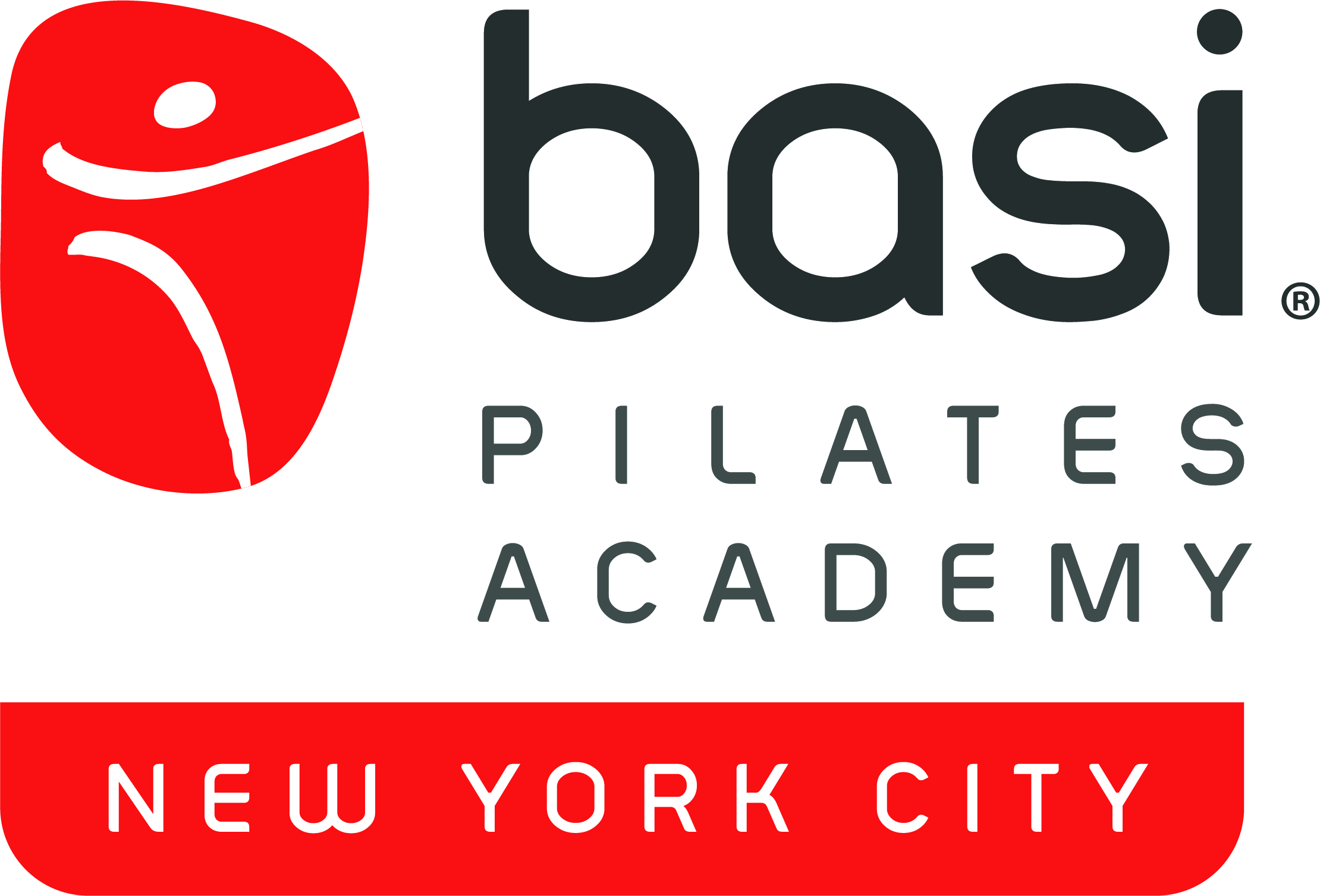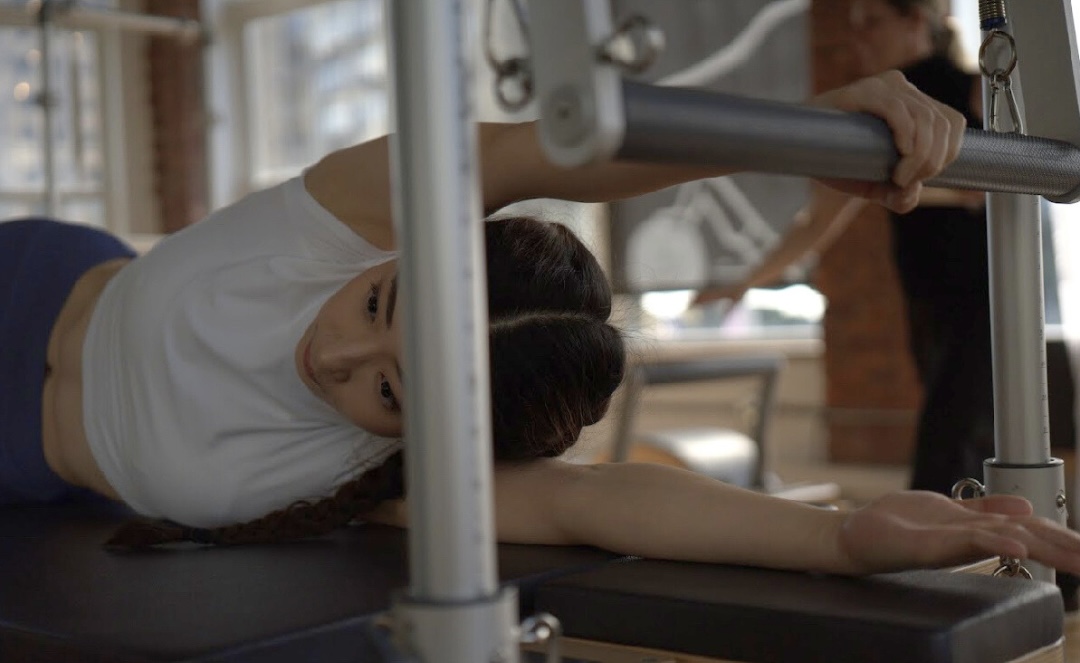The workout has tons of benefits—but let’s clear up some misconceptions first.
Pilates isn’t new—in fact, it’s nearly 100 years old!—but lately, more and more folks are turning to this form of low-impact exercise. Case in point: Pilates nabbed the title as the most popular workout of 2023, according to ClassPass’s annual report, beating other fan-favorites including yoga, cycling, and barre.
If you’re interested in giving it a shot, you might be wondering: What kind of workout is it, exactly? Is it all about flexibility and balance, or does Pilates “count” as strength training too? (After all, if you’ve ever seen the core-centric “one hundred” move, for instance, it certainly seems like it does a number on your abs.) We touched base with some Pilates experts to help us break down which boxes it ticks—and how you can fit it into your exercise routine.
So is Pilates considered a strength workout?
Originally developed as a rehab tool for World War I soldiers, Pilates places a strict emphasis on mobility, stability, proper form, body alignment, and mind-muscle connection. This makes it a great workout “for anyone who wants to improve their everyday functional movement habits or their sport,” Lynda Gehrman, owner and director of BASI Pilates Academy in New York City and a Pilates teacher trainer, tells SELF. You can do this through specialized resistance machines, like the Reformer, or on a mat using just your own bodyweight (and maybe a prop or two, like light weights, rings, or exercise balls).
If you strength train, you’re probably already familiar with some common Pilates moves, which include planks, squats, lunges, glute bridges, arm circles, leg circles, and crunch variations. So it holds to reason that Pilates is a form of strength training…. Right?
Yes, but with an asterisk. While research has found Pilates to be effective for building both strength and muscle—two outcomes we generally think of with strength training—it’s probably helpful to dig a little deeper.
For one, in the broadest terms, strength training can be defined as anything that simply makes your body stronger—basically, anything that allows your muscles to complete tasks at hand just a little bit easier, Pilates instructor Laurence Agénor, DPT, cofounder and clinical director at The Wellness Den by Cynergy Physical Therapy, tells SELF. This is where Pilates, as well as other activities like yoga, barre, and general weight lifting, all qualify, Dr. Agénor explains.
Pilates places a particular emphasis on eccentric muscle contractions (when they are lengthened under load, like lowering into a squat) to build strength, Gerhman says—think moves like leg circles and the elephant, which hit your hamstrings while they’re stretched. But because Pilates exercises also require a lot of stability, either your core or your limbs are pretty much also working isometrically (when the muscle holds still under load, like hanging out in the bottom of a squat) when you’re performing any movement. Finally, Pilates also uses concentric contractions (when your muscle shortens under load, like when you stand up from a squat), so it encompasses all of the three major contractions necessary to help your muscles get stronger.
But if you look at the definition of “strength” solely from a lifting perspective, from the lens of maximal strength, the answer is a little different, Dr. Agénor says. If you’re defining it by how much absolute weight you can move, either just once—known as your one-rep max—or in a handful of reps (the general recommended programming to really get stronger), Pilates doesn’t really fit the bill. Its ultimate goal isn’t to improve total force production and power, Dr. Agénor says, and it doesn’t involve performing exercises under a specific rep and set scheme to try to lift super heavy loads. (In fact, in the case of mat Pilates, you’ll be limited by how much you can even add).
So what kind of strength are you building in Pilates? Because it’s all about performing slow, controlled movements—which increases the time your muscles are under tension—you boost your muscular endurance rather than really improving on maximal strength, Dr. Agénor says. As a result, you train your muscles to be able to work for longer and get a whole lot done without having to lift really heavy loads.
Pilates builds the strength that helps you move safer and more effectively.
According to Gehrman, the main purpose of Pilates is building strength and stability in your fullest range of motion, rather than simply training to become more powerful in one specific movement.
When you’re doing Pilates, you’re working all the muscles that support a joint, which allows for greater and safer mobility. For example, when targeting your shoulders—say, through moves like shoulder circles or a Reformer exercise called “chest expansion”—you’re not training just your deltoids. You’re also challenging the small rotator cuff muscles that surround your shoulder joint. The same applies for lower-body moves, like leg circles or the single-leg glute bridge, which work your smaller, stabilizing butt muscles—the ones lots of people tend to neglect. By calling in reinforcements, this helps guard against overusing certain muscles, since you’ll have more players pitching in to take on some of the load. As a result, you can reduce your injury risk, Gehrman says.
What’s more, the strength you build in Pilates is really comprehensive: The goal in a typical class is to work all your major muscle groups and to move your spine in various positions, including flexion, extension, side bending, and rotation, Gehrman explains. This helps build functional, well-rounded strength that prepares you to safely and effectively tackle a variety of motions in sports and life.
But it’s not just about strength, either.
“Pilates is beneficial for so many reasons,” Dr. Agénor says. While you’re increasing your strength, you’re also improving a ton of other aspects of your fitness, which makes it a really effective, well-rounded modality.
Take balance, for example. Pilates is great for helping you keep steady, since it includes lots of single-sided moves like lunges and the scooter exercise that challenge your center of gravity, Dr. Agénor says. Plus, if you’re doing it on the Reformer, the unstable surface can really help you ward off the wobble, she adds. In fact, a hefty pool of research has confirmed this benefit for a whole host of different populations, including healthy adults, younger people with lower back pain, and older folks at risk of falls.
Pilates can also enhance your flexibility—research backs this up too—but not in the way you probably think. A common misconception about Pilates is that it involves a ton of stretching, Gehrman explains. And while instructors may sprinkle in a few static stretches (ones where you get into a position and hold) here and there, most of the flexibility benefits come through working your muscles eccentrically, Gehrman says. There’s solid carryover with this too: Along with decreasing your risk of injury, it also helps your muscles work super effectively, helping boost your performance in the gym or in sports. So no, it’s not just about nailing a split or folding your forehead to your thighs.
Another benefit: Pilates can teach you to connect more mindfully to your body; instructors cue heavily to make sure participants know which muscles should be firing during certain movements and how it should feel, Dr. Agénor says. This can help build body awareness that extends beyond class.
Finally, if you’re just getting started with exercise, it’s possible that Pilates can get your heart rate up high enough for a sustained period of time to check the “cardio” box too. But it all depends on your level of conditioning. If you’re a regular exerciser, even though you may get a little breathless from time to time, it likely won’t get your heart rate high enough for long enough to truly qualify as “cardio,” Dr. Agénor explains.
All in all, Pilates can be a pretty awesome complement to whatever else you like to do for exercise.
Looking to fit Pilates into your current workout routine? There are a bunch of different ways it can enhance your fitness and jive with other ways of moving your body.
Pilates can “be your only form of exercise if you want it to be,” Gerhman explains, “but it’s really meant to complement every form of fitness, every sport, every functional movement.”
So depending on your baseline, Pilates can check the box as your “strength” workout if you’re looking for muscular endurance instead of max force production and power; it can also pair really well with a more traditional weightlifting routine since it helps build super comprehensive functional strength and focuses on stabilizing muscles that heavy lifting sometimes overlooks. Even if Pilates isn’t your main squeeze, doing it now and again might help you level up at the gym, since it’ll engage and strengthen those small muscles that support your major lifts.
More of a cardio person? Pilates can provide a boost on that front too. Whether you’re a regular runner, swimmer, or cyclist, it helps emphasize mobility and core stabilization—both of which can help you crush those repetitive movements more safely and effectively.
To sum it all up, no matter what type of workouts you love best, sprinkling in some Pilates can make you a stronger, more resilient exerciser—and human. And who doesn’t want that?
FOLLOW US
For full length videos that benefit our scholarship program visit Virtualogic.earth

